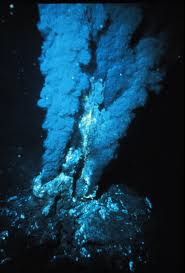Last year I wrote about the possibility of sending robots to asteroids to mine them for their metals, and although this might sound a little far fetched there are companies that exist to promote and make the idea possible.
In this posting I would like to draw attention to proposals for mineral mining a little closer to home. The International Seabed Authority (part of the UN) released a report last week about how it intends to manage the extraction of metal rich rock from the seabed.
The sea floor contains gold, copper, manganese, cobalt and other metals, and it now seems that the mining companies have the engineering capability to harvest it. The prices are high for these metals too, so they also have some economic push to help them along.
Licenses to prospect have already been granted, so it seems only a matter of time until companies are given permission to start removing pieces of the sea floor.
What they are interested in are pieces of the chimneys of hydrothermal vents which contain many of these metals in high quantities. Some estimates related to the bed of the Eastern Pacific Ocean give an idea of the amount of materials that are down there, seven billion tonnes of manganese, 340 million tonnes of nickel, 290 million tonnes of copper and 78 million tonnes of cobalt.
This is a completely new field for mining companies though, nobody has experience in this kind of work. But the only way to gain experience is through actually doing the job, so the authorities are in a tricky position. How can they give licenses to a company with no track record in the field? Surely that means accepting a trial and error system that will inevitably lead to accidents and pollution. There are plenty of recent examples of deep sea oil drilling going very wrong, and that is after many years of experience.
And these hydrothermal vents host life that only exists in the unusual conditions that they create, what will happen to those highly developed and particular creatures and plants?
So I ask the possibly false question of sustainability. We all use these minerals, they are in everything we touch but we don’t tend to think about where they come from. Mining is a dirty business in any situation, and by definition it cannot be sustainable as far as I can see because we are dealing with finite quantities of materials that will not reproduce themselves.
But should we or indeed can we draw a line? Asteroids, the seabed, the Antarctic, where next?

4 thoughts on “Mining the Seabed”